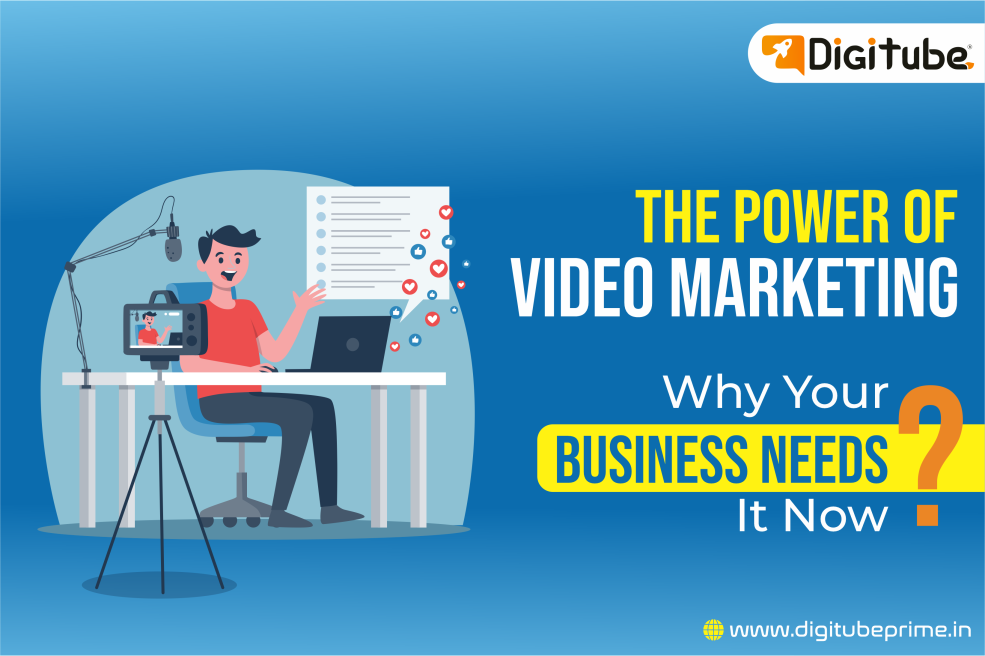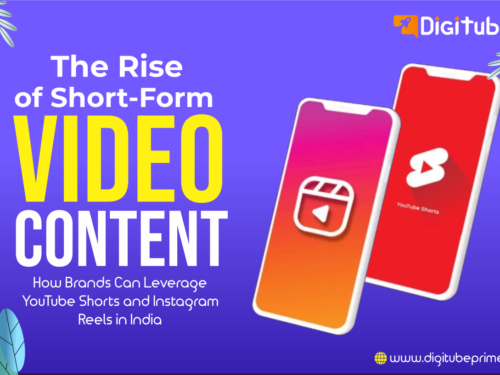
In the age of digital transformation, video marketing has become an indispensable tool for businesses of all sizes. The rising demand for video content reflects its unmatched ability to engage, inform, and convert audiences effectively. Whether it’s Instagram reels, YouTube shorts, or explainer videos, businesses are leveraging video marketing to boost their online presence and drive revenue.
In this blog, we’ll explore why video marketing is essential for your business, the types of video content that work best, and how platforms like Instagram, YouTube, and TikTok are shaping the future of marketing.
The Growing Demand for Video Content
The stats speak for themselves:
- 90% of consumers say that video content helps them make purchasing decisions.
- Social media videos generate 1,200% more shares than text and image content combined.
- By 2025, online videos are expected to make up 80% of all consumer internet traffic.
The preference for video stems from its ability to convey complex information quickly and in an engaging format. It’s no surprise that platforms prioritizing video content, such as YouTube, TikTok, and Instagram, are thriving.
Why Your Business Needs Video Marketing
1. Boosts Engagement and Reach
Videos are more likely to grab attention than static images or text posts.
- Example: Instagram reels and YouTube shorts often reach wider audiences due to their algorithmic boost, increasing brand visibility.
2. Improves Conversion Rates
Including a video on a landing page can increase conversions by up to 80%.
- Example: Explainer videos help potential customers understand products or services, nudging them toward purchase decisions.
3. Increases Social Media Impact
Social platforms prioritize video content, meaning your posts are more likely to appear in users’ feeds.
- Example: TikTok videos with trending audio or Instagram reels showcasing user-generated content often go viral, bringing organic growth.
4. Builds Trust and Credibility
Videos allow businesses to showcase their authenticity, making it easier to connect with customers.
- Example: Behind-the-scenes videos or customer testimonials create a sense of transparency, boosting trust.
5. Improves SEO
Search engines prioritize video content in search results, especially when optimized with proper tags and descriptions.
- Example: Embedding YouTube videos on your website can increase time spent on your page, positively affecting SEO rankings.
Types of Video Content That Drive Engagement
- Reels and Shorts
Short-form content is highly shareable and can deliver impactful messages in under 60 seconds.- Best For: Quick tips, product showcases, or trending challenges.
- Example: A clothing brand creating reels with styling tips using trending music.
- Explainer Videos
Ideal for introducing complex products or services.- Best For: SaaS companies, tech products, or online courses.
- Example: Dropbox’s explainer video simplified their product concept, leading to significant user growth.
- Live Videos
Live streams help businesses interact with audiences in real time, boosting engagement.- Best For: Product launches, Q&A sessions, or tutorials.
- Example: A skincare brand hosting live sessions to demonstrate product usage and answer queries.
- Tutorials and How-To Videos
Educational content positions your brand as an authority in your niche.- Best For: Fitness brands, cooking channels, or DIY products.
- Example: YouTube tutorials on “how to use” gadgets drive millions of views and sales.
- Testimonial and Review Videos
Showcase real customers sharing their positive experiences.- Best For: Building trust and addressing potential objections.
- Example: An automobile company featuring customer reviews on their YouTube channel.
Case Studies: Success Through Video Marketing
1. Zomato (India)
Zomato uses Instagram reels and quirky videos to stay relevant and relatable. Their humorous short-form videos often go viral, engaging a younger audience.
2. Nykaa
Nykaa’s YouTube channel features tutorials, product reviews, and customer testimonials, which have significantly boosted its brand visibility and sales.
3. Nike
Nike leverages storytelling through videos, such as inspirational athlete stories, to connect emotionally with their audience, driving brand loyalty.
Tips for Effective Video Marketing
- Keep it Short and Sweet: Short videos (under 60 seconds) have higher engagement rates, especially on platforms like Instagram and TikTok.
- Focus on Storytelling: Engage viewers with a narrative that resonates with their emotions or challenges.
- Use High-Quality Visuals: Invest in good lighting, sound, and editing to make your videos professional and appealing.
- Leverage Analytics: Track video performance to understand what content resonates most with your audience.
- Add Captions: Many viewers watch videos on mute, so captions are crucial for retaining attention.
The Future of Video Marketing
The shift towards video content is undeniable, with trends like:
- AR/VR Integration: Interactive and immersive videos for product trials.
- Shoppable Videos: Enabling viewers to purchase directly from videos.
- Personalized Video Content: AI-driven tools delivering customized messages to individual customers.
Conclusion
Video marketing is no longer optional—it’s a necessity for businesses looking to thrive in the digital landscape. By embracing platforms like Instagram, YouTube, and TikTok, and creating engaging, high-quality video content, your business can reach new heights. Start small, experiment, and let the power of video marketing propel your brand forward.
Digitube Prime – Your Partner for Digital Success.






